CFL, Halogen and LED light bulb comparison, operation and usage in outdoor flood light fixtures.
Flood lights are the most popular outdoor lighting fixtures. One of the most important parts of flood light is its bulb. Brightness, efficiency, lifespan, durability, size and even environmental impact depend from the type of light bulb used in a flood lighting fixture.
Three most popular types of light bulbs used in today’s flood lights are:
- CFL
- Halogen
- Light-emitting diode (LED)
You have probably read different articles about which light bulb is better for home usage and why. However, in this article I will look at those three bulb types from flood lighting perspective, and analyses their strengths and weaknesses for outdoor usage.
Also, I will explain from what materials each of three light bulbs are made and how they work. At the end of description for each bulb I will conclude all the pros and cons for those bulbs especially considering usage in outdoor flood light fixtures.
Click here for a visual INFO GRAPHIC with “LED, CFL and Halogen bulb comparison for outdoor flood lights” at the bottom of the page!
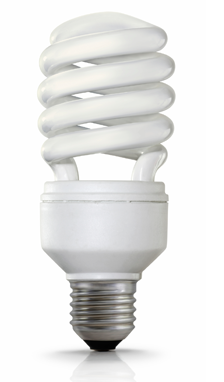
CFL light bulb
CFL
CFL or compact fluorescent light bulb is one of the most common type of bulb used in lamps inside a house (your probably have one in your house) and continuously are replacing older incandescent light bulbs we have known for over hundred years. However, CFL bulbs are much less used in outdoor lamps than halogen or LED bulbs. You can still find CFL used in few outdoor flood lights, but there are few good reasons, why CFL bulbs are not best suited for flood lights. I will talk about CFL disadvantages in a moment, but now let’s see how CFL actually work and what materials are used in CFL bulbs.
How it works
- CFL bulb consists of integrated ballast, argon and very low amount of mercury vapor, spiral-shaped glass tube and a fluorescent coating or phosphor (from which the name CFL – compact fluorescent light has originated).
- Bulbs ballast regulates electric current which runs through the spiral tube.
- Spiral tube contains argon, which regulates the environment inside the spiral tube and mercury – toxic element that absorbs electrical current and creates light. When electric current runs through argon and mercury vapor, gas gets excited and generates ultraviolet light.
- Ultraviolet light stimulates fluorescent coating or phosphor, which is painted on the inner walls of spiral glass tube.
- Fluorescent coating absorbs this energy and emits a visible light, which can be seen by a naked human eye.
Advantages
- Price – Price is probably the only advantage of CFL bulb compared to LED bulb. Currently, CFL bulb costs three or more times less than LED bulb.
- Lifetime – Approximate lifespan of CFL bulb is 6000–15000 hours. This is significantly longer than incandescent or halogen bulb lifespan, but shorter than LED bulb lifespan. However, in real life there is a high chance that you won’t reach close to 15000 hour lifespan of CFL bulb, because various activities can impact its performance and shorten the lifespan. Read more about those activities that causes CFL to run short on their rated life here.
- Performance and efficiency – CFL bulbs consume 75 percent less energy than incandescent bulbs and approximately 50 percent less energy than halogen bulbs.
- Environment – There are two sides here. From one side CFL consumes less energy than other light bulbs (except LED), which means that they are more environmentally friendly light. But from the other side, material used in CFL bulbs – mercury is highly toxic and is bad not only for environment, but also for humans (see disadvantages).
- Can be used outdoors (with few important restrictions, see disadvantages).
- Form factor – CFL bulbs come in all sorts of shapes and sizes and can fully replace ineffective incandescent bulb.
Disadvantages
- Mercury – Mercury is persistent and highly toxic chemical. Although, the usage of Mercury in CFL bulbs has decreased from past years, it still is a very dangerous and toxic material that is poisonous to humans. CFL lights are perfectly safe to use on regular basis, the problem starts, when CFL spiral tube glass breaks and releases toxic mercury. If such a situation occurs to you, here is a guide explaining the steps you need to take, in order to safely dispose the broken light bulb.
- Fragile – CFL bulbs are a lot more fragile than LED diodes.
- Do not turn fully on instantly – One of the main drawbacks of CFL bulbs is that, unlike other light bulbs, CFL does not reach full brightness instantly. It may take up to 3 min for older CFL bulbs to reach full brightness. This isn’t big of a deal, when CFL bulb is used indoors on regular fixtures like table light or ceiling light, which are rarely turned on and off and usually continue to illuminate for longer time, but is a major drawback for motion activated outdoor lights. Motion activated lights need to turn on instantly with full brightness, when motion is detected in front of the light. Also the next disadvantage proves the point that CFL bulbs are not the best solution for motion flood lights.
- Switching on and off reduces lifetime – This is major disadvantage and one of the main reasons why CFL bulbs are less common in outdoor flood lights than halogen or LED bulbs. Switching CFL bulb on and off regularly can reduce the lifespan of a bulb quite a lot, and at the end, you may not even reach close to 6000 hours of lifetime.
- Not UV free
- Not environmentally friendly
- Although they can be used outdoors, there are few thing to note:
- Bulbs need to be covered with appropriate protective casing, because they are easily breakable;
- CFL are sensitive to temperature changes. Also they might not perform well in lower temperatures. Low temperatures may cause bulb to produce lower light levels.
Usage in flood lights
Considering all the advantages and disadvantages of CFL bulb, it becomes clear, why LEDs or Halogen bulbs are preferred type of bulbs used in a flood light fixture. Although CFL can offer decent lifetime, brightness, efficiency and are not that expensive if compared to current price of LEDs, there are some serious drawbacks for CFL usage in a flood light fixture. Firstly, CFL are pretty fragile and needs a proper casing in order to be used outdoors. Secondly, they do not reach full brightness instantly, so are not the best option to be used with a motion sensor. Thirdly, regular switching on and off can dramatically shorten the lifespan of CFL bulb. Today most of the flood lights (especially solar) used around the house have a motion sensor, so it doesn’t need to illuminate all the time, which helps to save a lot more energy and lower electricity bills. Motion sensor means that floodlight fixture will turn on and off a lot of times and this will significantly reduce the lifespan of CFL bulb. Lastly, CFL bulbs contain a toxic element Mercury. It can be dangerous, if bulb gets broken and releases the toxic element into the environment. It is also poisonous not only for environment, but also for humans.
Next, let’s see, how halogen bulbs work and what are their advantages and disadvantages compared to other bulbs.
HALOGEN
Halogen bulbs have been the TOP bulb type for outdoor flood lights for a while, until LED diodes appeared and started to realize their tremendous plan of taking over the world and becoming the only type of lighting you will ever need and want to use in your home. Halogen bulbs are known for being „an upgraded version of incandescent bulb”, and offer few benefits not only over incandescent bulbs, but also over CFL and LED lighting, especially if we are talking about outdoor lighting.
How it works
-
Halogen bulb works pretty similarly to a regular incandescent bulb. Incandescent light bulb has got a large, thin glass surrounding (bulb). Inside the glass surrounding, in the center of bulb there is a tungsten filament. Electricity is used to heat up the filament and in result, it starts to glow and emit a lot of visible light. Inside of the bulb is filled with an inert gas, usually argon. Argon prevents bulb from burning out quickly, by bouncing evaporated tungsten atoms back to the filament, instead of collecting them on the inside of bulbs glass. Halogen bulb, same as incandescent bulb, also uses tungsten filament, but it is composed in much smaller sized surrounding made from quartz instead of glass, which is stronger and has higher melting point than glass. This smaller bulb is usually located in a larger outer shell. Inside of a quartz bulb there is halogen gas. It slows down the thinning process of tungsten filament and so increases the lifespan of the bulb and allows it to reach higher temperatures and brightness.
- Tungsten atoms evaporate off the filament and accumulate on the walls of the bulb, which causes bulb to get black and tungsten filament to get thinner by the time. The purpose of halogen gas is to „catch” these tungsten atoms and redeposit them back from walls of the bulb to the filament. This is possible due to chemical reactions, which combine halogen gas with tungsten. This process is possible, when temperature inside the small bulb gets very high, which is the reason, why halogen bulbs can get extremely hot.
- This process, called halogen cycle, helps to keep glass of bulb from blackening, so the bulb can illuminate at full brightness trough almost all of its life.
- Because of the high temperature filament can reach, and previously mentioned chemical properties of halogen gas, halogen bulbs can produce bright white and focused beam of light, which is very close to sunlight.
Advantages
- Price – Halogen bulbs cost twice less than CFLs and approximately 5 – 10 times less than LED diodes.
- Bright with CRI of 100 (or close) – Halogen bulbs usually have excellent Color Rendering Index or CRI , which means, that halogen bulbs can produce light that is close to sunlight.
- Turns on instantly – Unlike CFL, Halogen bulbs turn on instantly, so they can be used in motion activated flood lights.
- Dimmable – Halogen bulbs are dimmable, so you can choose right the amount of lighting for each situation.
- Size – The compact size of halogen bulb is a major advantage for outdoor lights. Halogen bulb can be made much smaller in size than CFL bulb to reach the same brightness. In result, halogen flood lights are smaller, more compact and portable than CFL lights. This is why halogen bulbs are also used in portable flood lights.
- Outdoor usage – Until LED diodes became popular, Halogen lights were the best solution for outdoor lighting by far. And they are still a pretty good competitor for LED lights. Halogen flood lights produces bright white light, with excellent color rendering (which some LED diodes still struggle to do) and it’s easy to see by this light in the dark. Although halogen bulbs have much lower lifespan, when used together with motion sensor, you can actually get pretty decent lifetime out of a halogen light. Very bright LED lights will cost multiple times more than similar brightness halogen lights. From the size and shape perspective, LED lamps are smaller than halogen lamps, however, CFL lamps are a lot larger and less portable than both LEDs and halogens.
- Environment – No mercury is used in halogen bulbs, in opposite to CFL. On the other side, halogen bulbs consume a lot of electricity, so are not considered the most environmentally friendly bulb type.
Disadvantages
- Inefficient – Halogen bulbs are significantly less efficient than CFL and LED bulbs. Most energy of halogen bulb, same as incandescent bulb, gets wasted as heat. As larger will the halogen bulb be, as more energy it will consume, when compared to CFL or LED bulbs. Inefficiency and short lifespan are two major issues of halogen bulbs and reasons, why LED diodes are going to replace them in near future.
- Gets extremely hot – Another issue with halogen lights is that they tend to get extremely hot while illuminating. Halogen lights can get so hot that they cannot be touched with bare hands or skin can easily get burned.
- Lifespan – Although halogen bulbs can offer longer lifespan than incandescent bulbs, they cannot match CFL or LED bulbs. The average lifespan of halogen is approx. 2500-3500 hours, while CFL can offer over 10000 hours and LED more than 20000 hours of work time.
- Sensitive to oils – Halogen bulbs cannot be touched with bare hands. They are sensitive to different oils and may work faulty, if bulb head gets touched, when light is installed. So always use cloth or gloves, while installing a halogen bulb.
- Very intense light – Light of halogen diode is so intense that it is not advised to look directly into the light as it can cause serious eye injuries! Light needs to be shaded in order to use it in a place, where people can accidently look directly into the lighting.
Usage in flood lights
Halogen bulbs were the most popular types of bulbs used in outdoor flood lights before LEDs become popular. There are still few advantages of halogen bulbs compared to other, when it comes to outdoor lighting. They have no warm up period and can be turned on instantly, which is great for motion activated outdoor flood lights. Light has very good color rendering index (100 or close to it) and it produces bright white light that creates natural lighting effect. Halogen bulbs continue to illuminate at constant intensity throughout all of its life. Halogen bulbs are small and light, which is perfect for smaller outdoor flood lights and portable flood and work lights. The form factor is much smaller than CFL lights, but larger than LED diodes. Halogen lights are also the cheapest type of bulb for outdoor lighting, as they can cost even 10 and more times less than LED diodes.
However, there are numerous disadvantages for halogen lights, which makes LED lights equal and sometimes superior outdoor lighting source. First, halogen bulbs are very inefficient compared to LED or CFL bulbs. Most of the electricity of halogen bulb gets wasted as heat, similarly as with incandescent bulb. The price of halogen may be a huge factor to consider buying halogen light instead of LED light, but in the long run, LED will pay itself off after few years of usage, because of inefficiency of halogen light. Another factor to consider against halogen light is the short lifespan of a bulb. The average lifespan of a halogen is 2500 hours, which is t least 10 times less than lifespan of LED diode. This factor again equalizes the large starting costs of LED diodes versus the cheap staring costs of halogen bulbs.
All in all, if you do not want to switch to LED diodes yet, or halogen bulb advantages surpass disadvantages for your needs, then go for the halogens. They are still widely used bulb type for outdoor flood lights and will continue to be, till LED diode matures more from technological point and becomes less expensive than they are at this moment.
LED
LED or light-emitting diode is relatively newer type of lighting and is considered the future light bulb. LED bulb (correctly diode) offers numerous advantages over other types of bulbs like dramatically longer lifetime, energy efficiency and more. Currently, the only weak point of LED diode is its entry price, LEDs cost significantly more than other types of bulbs, but this is to change in the nearest future. LED advantages also make them supreme for outdoor usage. Next, you will find how LED diodes are different from other types of bulbs in a way they work, what are their pros and cons and why they are considered the best type of bulbs for flood lights.
How it works
- LED diode creates light, when electrical current is passed through semiconductor material. LED diode consists of a semiconductor material, which is doped to create a p-n junction. P-side is also known as anode and n-side cathode. Semiconductor used in diodes can differ, some more common materials are aluminum-gallium-arsenide, gallium phosphide, gallium arsenide phosphide. Different semiconductor material results in different color light of LED diode.
- N-type material is bonded to p-type material and has electrodes on both ends. N-type material has extra electrons, while p-type material has extra holes.
- When battery gets connected to power the diode, because of p-n junction current flows from p-side to n-side, but no other way around. This means that n-type side needs to be connected to negative end and p-type side to positive end of battery.
- Battery moves electrons from n-type material to p-type, and holes in opposite way.
- Electrons and holes flows across the junction, and when electron combines with a hole, it falls into a lower energy level.
- This process then releases energy, more precisely photons, which are known as particles of light. So basically this interaction between electrons and holes generates light.
Here is a video describing the basics of LED diode.
Advantages
- Lifespan – LED diodes have much longer lifespan than CFL or Halogen light bulbs. Lifespan of LED diode can reach from 25000 to 100000 hours, which is way larger than closest rivals CFL lights with 15000 hour lifespan. Long lifespan means low maintenance costs. Generally speaking, when you buy a LED powered flood light you can be sure that light will work maintenance free for many years (even 20 and more), and you will not have to worry about changing the light bulb every few years. Long working life of LED diode is one of the main advantages that make them superior to other types of bulbs, and why we will see more LED diodes replacing old incandescent, inefficient halogen and runner-up CFL lights with their toxic substances.
- Efficiency –LED diodes have much better energy efficiency than CFL or Halogens. Efficiency is calculated by lumens per watt. Basically, what this means is that LED diode will consume less energy to output same amount of lighting as other bulbs. For example, to produce 1600 lumens incandescent bulb may require 100 watts, halogen bulb approx. 75 watts, CFL bulb 25 watts, while LED diode only 20 watts.
- Durability – LED diodes are solid state lighting. Unlike CFL or Halogen lights, which can be broken quite easily, LED diodes are much more durable, so they can be used in outdoor light fixtures including flood lights.
- Less heat emissions – LED diodes produces less heat emissions than CFL and especially Halogen bulbs. Most of the energy powering LED bulb converts into light and much less gets wasted as heat (more than 90% of incandescent bulbs energy gets wasted as heat). However, larger and more powerful LED flood lights require many diodes working together to reach the high level of brightness and this generates a lot of heat, so appropriate heat sinking system is needed for a fixture.
- Environment – LED diodes do not contain any toxic substances like mercury, which can be found in CFL bulbs. Also LED diodes are fully recyclable, and because they are the most energy efficient and require less energy to produce same amount of light than other bulbs, they are also more environmentally friendly. When combined together with a solar panel, they provide the most energy efficient and environmentally friendly outdoor lighting fixture.
- Size – LED diodes are much smaller than any other light bulbs. This improves the durability of LED diode, because there is smaller surface to be broken for example, when compared with CFL bulbs. However, in order to produce higher levels of brightness, lamp needs to have multiple LED diodes illuminating side by side, which increases overall size of the lighting fixture.
- Dimmable – LED lights are fully dimmable.
- Turns on instantly – Same as halogen bulbs, LED diodes turn on instantly in milliseconds. That’s why diodes are widely used in motion activated flood lights.
- Multiple color options – LED diodes can emit different color light without need of color filters.
- Outdoor usage – Because of their long lifespan, durability, compact size, ability to turn on instantly and efficiency, LED diodes are perfect bulb type for outdoor lamps and lighting systems.
- Do not fail instantly – LED diodes do not fail instantly, but start to dim, when their lifetime comes to end. This may be plus in some occasions, when any kind of lighting is permanent, and dimmer LED lights will not make much of a difference in these places. However, in some situations, where constant level of brightness is required all the time, dimming of LED diode may be considered a disadvantage.
Disadvantages
- High costs – This has been and currently is the biggest disadvantage for LED diode and LED lights. High starting costs of LED light is what discourage many people to buy them at first place, although they might pay themselves off after a year or few of usage. The good part is that initial price of LED powered lights is decreasing each year and in the nearest future their price may converge or become closer to price of CFL and halogen powered lights. When this time comes, there is no doubt that LED lights will outgrow any other type of lights for home usage.
- Complexity of larger lighting units – Larger lighting units with LED diodes that require more power are facing few difficulties, such as, conducting all the heat of the light. Many tens and even hundreds of diodes need to operate in relatively small space in a lighting fixture, so lots of heat is generated in this process. In order to make these lights durable and efficient, lighting fixture needs to have specific design and heat sinking system, which can be a bit challenging to produce. From the plus side, more LED flood light manufacturers in recent years have started to produce efficient and high powered flood lights, which have a great build quality and are durable and reliable.
Usage in flood lights
Those features and advantages of LED flood lights make them the best bulb type for outdoor flood lights. First of all the efficiency of LED diodes makes them attractive option for outdoor lighting. The purpose of flood light is to illuminate a large outdoor area, and usually it requires a lot of electricity. Halogen lights are very inefficient, if you need continuous illumination every night. CFL lights are more economical, but still consume more energy than LED diodes. If you want to spend as less money as possible on electricity, the best outdoor lighting option for you are LED solar flood lights. LED and Solar in general are perfect combination, because LED diodes consume low amount of electricity and most solar panels are able to collect this amount of energy and store in flood lights battery, so it can provide electricity at night.
Durability and size of LED diode is also important factor considering their usage in outdoor flood lights. Halogen and CFL lights are fragile and can be broken quite easily. LED diodes are a lot more durable and have smaller form factor. These features are useful for outdoor flood lights, because outdoor lighting is subject to different weather conditions, including rain showers, high winds, hail, snow storms and similar. Not all flood light casings are durable enough to fully protect flood light from all impacts and it is better that fixture has durable LED diodes than more fragile CFL or Halogen bulbs.
Long lifespan of LED diode is also a huge advantage for outdoor flood lights. One thing every person who purchases a flood light wants is to never have to worry about maintenance or repairs of lighting fixture after installation, because usually flood lights are installed in high places, which are not that easy to reach. Buying and changing a light bulb of flood light once a few months for sure isn’t something you would want to do. LED diodes have lifespan from 25000 to 50000 and more hours. It means that you will not have to worry about changing a light bulb for up to 10 and more years.
Another plus for LED diodes is that, similar to halogen bulbs, they turn on instantly without any warm-up period. This is required for motion activated flood lights. Although, LED flood lights are more expensive than halogen or CFL flood lights, they will certainly pay themselves off in few years of usage. With LED powered lights your electricity bills will get smaller and you will not have to worry about maintenance, such as changing light bulb for very long time.
Conclusion
Currently, three most popular types of bulbs for outdoor flood lights are CFL, halogen and light-emitting diode. Each of these bulbs has their own advantages and disadvantages that make them better solution in certain situations.
CFL lights are great for usage in indoor places, they are cheaper than LEDs and consumes much less energy than halogens. However, they are not that good for outdoor usage. Bulb is significantly larger than LED diode or halogen bulb, fragile and contains toxic element – mercury. All these properties do not make CFL light a good option for outdoor flood lighting.
Halogen bulbs are much more common in outdoor applications. They are very bright, have good form factor for a flood light, and cost cheaper than CFL bulbs and a lot cheaper than LED diodes. Halogens also have excellent color rendering index and they have no warm up period and they can turn on instantly, which is important for motion activated flood lights. However, there are two huge disadvantages for halogen bulbs. First, they are very inefficient, because a lot of electrical energy gets wasted in heat and only less than 20% of energy transforms in light. This means that your electrical bills are going to be much higher with these lights. Second, they have much shorter lifespan, when compared to their closest rivalries light-emitting diodes. Halogen bulbs can reach lifespan of only 2500-3500 hours, while LED diodes can illuminate from 25000 to incredible 50000 and even more. In same time, CFL have average work lifespan of up to 15000 and more hours.
It must be pretty clear till now that light-emitting diode or LED is clear winner between these three light bulbs for outdoor usage. Their features are better suited for outdoor flood lights than those of CFL and halogen light bulbs. LED diodes are a more energy efficient, have much longer lifespan, have smaller size and are incomparably more durable, and also are more environmentally friendly light bulbs than two other. The major downside of LED light is its high price. At this time, you have to pay few times more for a LED fixture than for a CFL or halogen fixture. The good news is that LED lighting technology is still in a development process and scientists and manufacturers are looking for ways to improve their efficiency and cut down manufacturing costs of LED lights. In future we will see more consumer friendlier prices for LED light products, which mean that they will substitute incandescent, halogen and CFL bulbs in indoor and outdoor lighting fixtures. All these preferences plus few more makes LED diode currently the best light bulb for outdoor flood lights.
Thank you for reading this article! Feel free to express your thoughts or ask questions about this topic in the comments section. Also, share this article with your friends, if you found this information interesting and useful.
Here is an infographic with comparison between LED, CFL and Halogen light bulbs for outdoor flood lights.

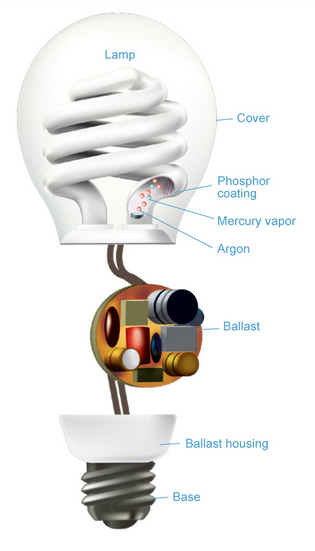
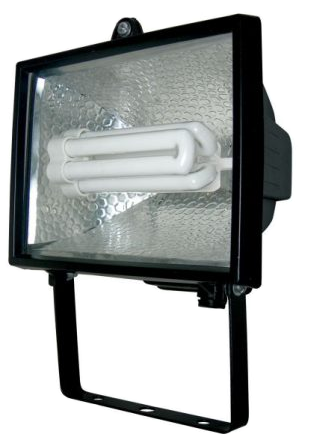
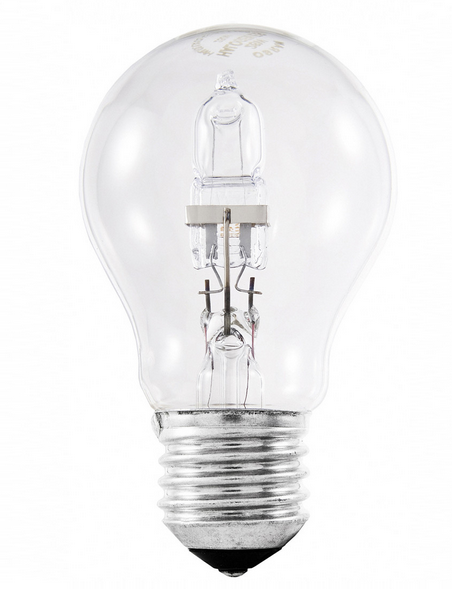
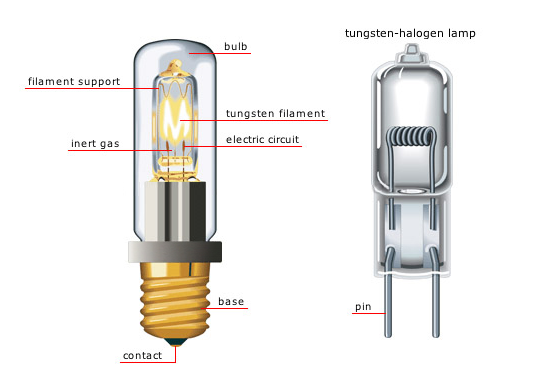
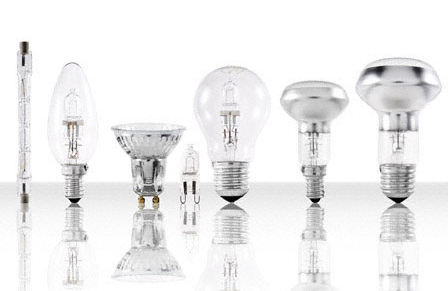
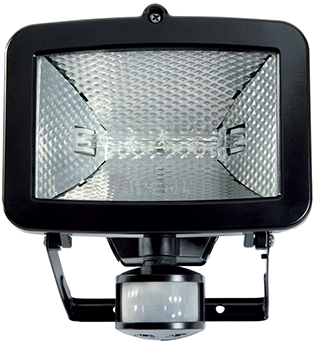
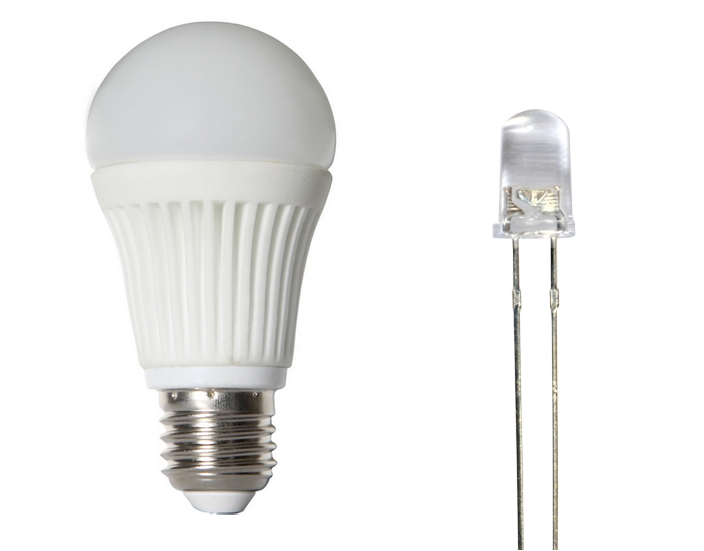
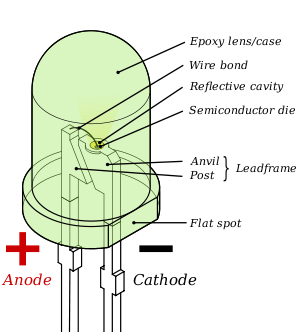
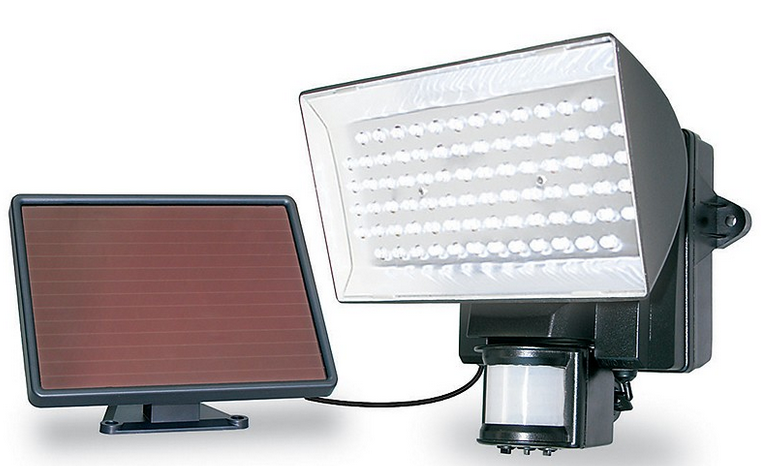

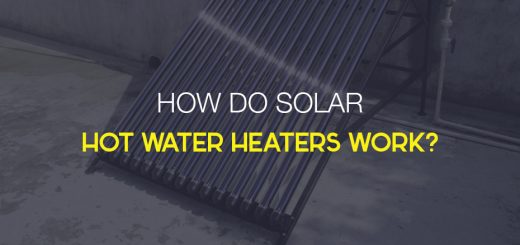
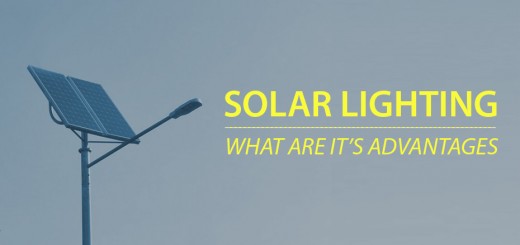
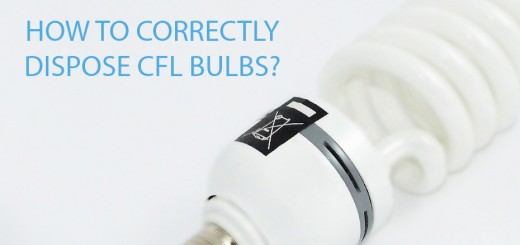
Your article cleared up a lot. Your only negative for LED lights didn’t turn out for me. I purchased them for 50 cents each at the Dollar Tree store. They give a cleaner light than the CFL. They shine more like a 90 watt. I love them and have been changing my whole house.
I totally agree with you Don, LEDs recently have seen such a massive price drop that there shouldn’t be any questions which type of bulb to install in house.
Hi Arthur, thanks for the great article. Would you say that the integrated LED motion detector lights are the best choice also? Considering the entire light kit has to be replaced when the light fails, this is why I’m wondering. Also, most of the lights I find are either the integrated LED or halogen. Thanks.
Hi Karen,
I don’t fully understand what you mean with “integrated LED motion detector lights”?
But in any case, LEDs will run much longer than halogens and if any other part of a lighting fixture fails, in most cases it will be easier to replace the whole fixture rather than trying to find a replacement for that certain part of the fixture (if we are talking about cheaper priced lights).
Arthur.
You say LEDs last longer and I agree the LED will but what about the circuit that powers the LED? I have a 2 year old house and I put 100% LED lighting in. On the outside I have 10 LED flood light bulbs and so far I have had 3 bulbs fail. That was nearly $30 worth of bulbs!
No savings here.
Big disadvantage of LED outdoor lighting is the big spike in the blue light wavelength. Blue light inhibits melatonin, leading to sleep disruption and health effects. See: https://www.health.harvard.edu/staying-healthy/blue-light-has-a-dark-side
The inefficiency of halogen and incandescent bulbs are overstated, especially for Northern latitudes, where most of the light use is during winter evenings. Therefore, the heat is not wasted–it contributed to the home heating. If you swap out to LEDs, the home heat source has to make up for the lost heat from the bulbs. In the summer, evening daylight is much longer, so there is much less lighting use.